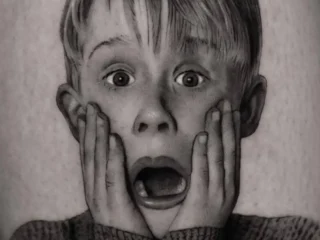Inked Mag Staff
July 20th, 2018
Vintage Wagner Tattoo Flash Discovered in Trunk! Paid $10 for Treasure!
They belonged to an Old Sailor! The six sheets were found in the bottom of a trunk in an attic owned by an 84-year old career Marine Corps man. The trunk…
They belonged to an Old Sailor!
The six sheets were found in the bottom of a trunk in an attic owned by an 84-year old career Marine Corps man. The trunk had been in storage for over forty years and held other collections including a 1584 hand-colored map engraving of Tuscany, which is also up for auction by Ripley Auctions.

Tony Gallick, an antique collector, found the trunk in a recent estate sale and shared, “While the man was over seas in the 1940’s, his wife kept busy by shopping yard and estate sales. The house was covered floor to ceiling with boxes they moved from house to house as he was reassigned. She bought the trunk and it remained in storage for decades. I saw a trunk and thought it was pretty cool and paid $10 for it.”
When Gallick first saw the flash sheets, he knew they were rare. “I didn’t know the artist, but I knew they were highly collectible. I researched for about two months and the 1908 date on one design was my starting point. There were only a handful of tattoo artists at the turn of the century. The flash of ships and sailors lead me to research port cities. That lead me to New York, the Bowery, then Charlie Wagner and Sam O’Reilly. They were working together for a decade until Sam’s death in 1909.” When Sam died in 1908, Charlie moved into his shop and their work was blended together.


Sam O’Reilly (1854-1909) learned tattooing in the Navy and patented the first tattooing machine in 1891. He practiced in New York City in the bowery. Charlie Wagner (1875-1953) was a tattoo artist for more than 50 years. He apprenticed with Samuel O’Reilly and patented his own tattoo machine in 1904. He sold tattoo machines and his brand of ink and tattooed circus performers, sailors and “tattooed ladies.”

Gallick has spoken to flash experts who note several aspects of the sheets that point to Wagner and O’Reilly. The paper is the right size and material. Charlie was one of the only artists of the day to use brown instead of black ink. The vibrantly colored tattoos were representative of his work. The subject matter dates back as far as 1894 including Buffalo Bill, Custer, the Spanish-American War, the image of crossed guns representative of Teddy Roosevelt’s Rough Riders, to name a few. One image includes the date 1908.

Gallick discovered an image of Jesus on one flash sheet that can be seen in a common photo of a boy Charlie tattooed over many years, beginning at age nine. “He brought him in the shop located in the back of a barber shop and gave him free tattoos. This kid was an orphan and in 1906 he got a full body tattoo. Charlie talked him into being the first electronically tattooed boy in America and helped him get a job in the circus. On his chest is a tattoo of Jesus which can be seen on the flash sheet,” shared Gallick. “Charlie was one of the only artists tattooing children with images of sailors,” he added.

If you are interested in bidding on these pieces of tattoo history call (317) 251-5635 or visit Ripleyauctions.com
Editor's Picks
Bridging Classical Art and Modern Tattooing
Esteban Rodriguez brings the discipline of classical fine art to the living canvas of skin, creating hyper-realistic tattoos that merge technical mastery with emotional depth.
Show Your Ink Fashions Brings Custom Style to Tattoo Culture
Show Your Ink Fashions creates custom shirts designed to showcase your tattoos as wearable art, blending fashion with personal expression.
The Ultimate “Superman” Tattoo Roundup: Just in Time for Superman’s Return to Screens
With Superman’s big return to theaters, fans are revisiting some of the most iconic ink inspired by the Man of Steel.














